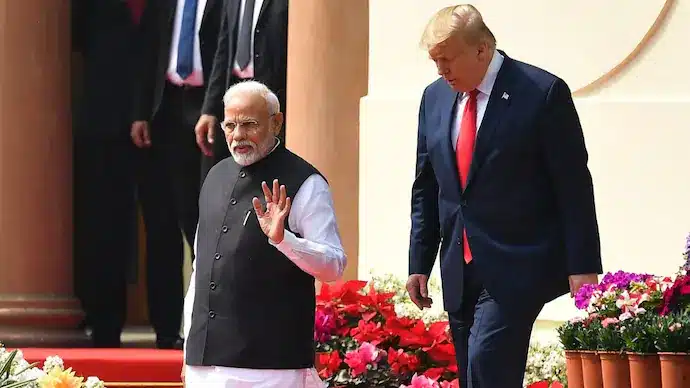Potential Cuts in India-US Trade Deal Under Trump Administration

The United States is actively pursuing an interim trade agreement with India that aims to lower proposed tariffs to below 20%. This potential deal would position India more favorably compared to other nations in the region. Unlike many countries, India is not expected to receive a formal notice regarding tariff hikes this week. Instead, the agreement may be announced through an official statement, according to sources cited by Bloomberg. The interim deal would allow both countries to continue negotiations, giving India time to address outstanding issues before a broader agreement is anticipated later this year.
Details of the Proposed Agreement
The proposed interim trade agreement between the United States and India is expected to establish a baseline tariff of under 20%, a reduction from the initially proposed 26%. This agreement would include provisions for further adjustments as part of a final pact. However, the timeline for finalizing this interim deal remains uncertain. If successful, India would join a select group of nations that have secured trade arrangements with the Trump administration. In contrast, several other countries have recently faced unexpected tariff hikes of up to 50% ahead of the August 1 deadline.
India is advocating for a more favorable deal than the one signed with Vietnam, which included tariffs set at 20%. Vietnam, caught off guard by the high rates, is now seeking a revision. Currently, the baseline tariff for most U.S. trade partners stands at 10%. For Asian countries, announced rates include 20% for Vietnam and the Philippines, while Laos and Myanmar face tariffs as high as 40%.
Current Trade Relations and Challenges
Despite being among the first to initiate trade discussions this year, India-U.S. relations have recently experienced tensions. President Trump has hinted at an imminent agreement but has also suggested the possibility of imposing additional tariffs related to India’s membership in BRICS. An Indian negotiation team is expected to visit Washington soon to advance trade discussions. India has already submitted its final offer to the Trump administration and outlined its non-negotiable positions.
Key sticking points in the negotiations include the U.S. demand for India to permit genetically modified (GM) crops, which New Delhi has firmly opposed due to concerns for local farmers. Other unresolved issues involve non-tariff barriers in agriculture and regulatory challenges within the pharmaceutical sector. As both nations work towards a resolution, the outcome of these discussions will significantly impact their economic relationship.
Implications for Global Trade
The potential trade agreement between the United States and India could have significant implications for global trade dynamics. If finalized, it may set a precedent for future trade negotiations between the U.S. and other countries. The agreement could also influence how other nations approach their trade relationships with the U.S., particularly in light of the recent tariff hikes imposed on various countries.
As the U.S. administration continues to navigate its trade policies, the outcome of the India-U.S. negotiations will be closely monitored by global markets. The agreement could enhance India’s trade position and economic prospects, while also reshaping the competitive landscape for other nations in the region. The coming weeks will be crucial as both sides work to finalize the interim deal and address the remaining challenges in their trade relationship.
Observer Voice is the one stop site for National, International news, Sports, Editor’s Choice, Art/culture contents, Quotes and much more. We also cover historical contents. Historical contents includes World History, Indian History, and what happened today. The website also covers Entertainment across the India and World.

